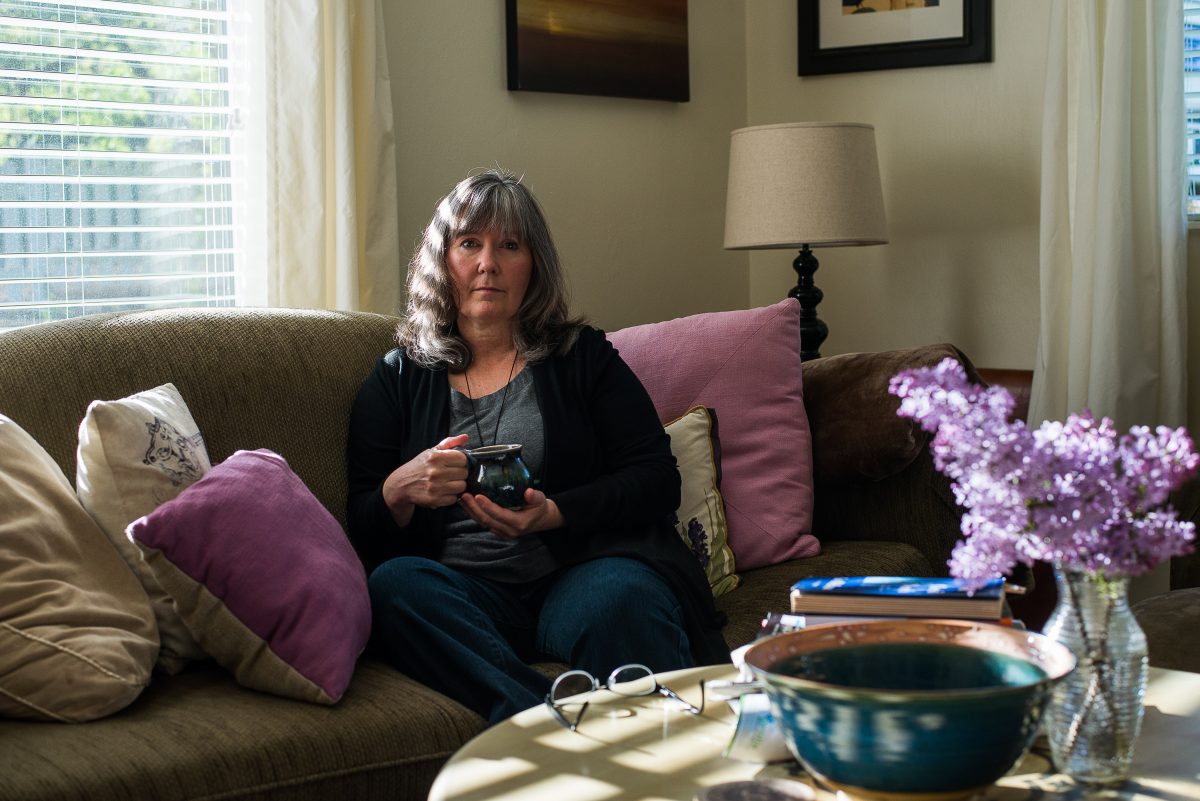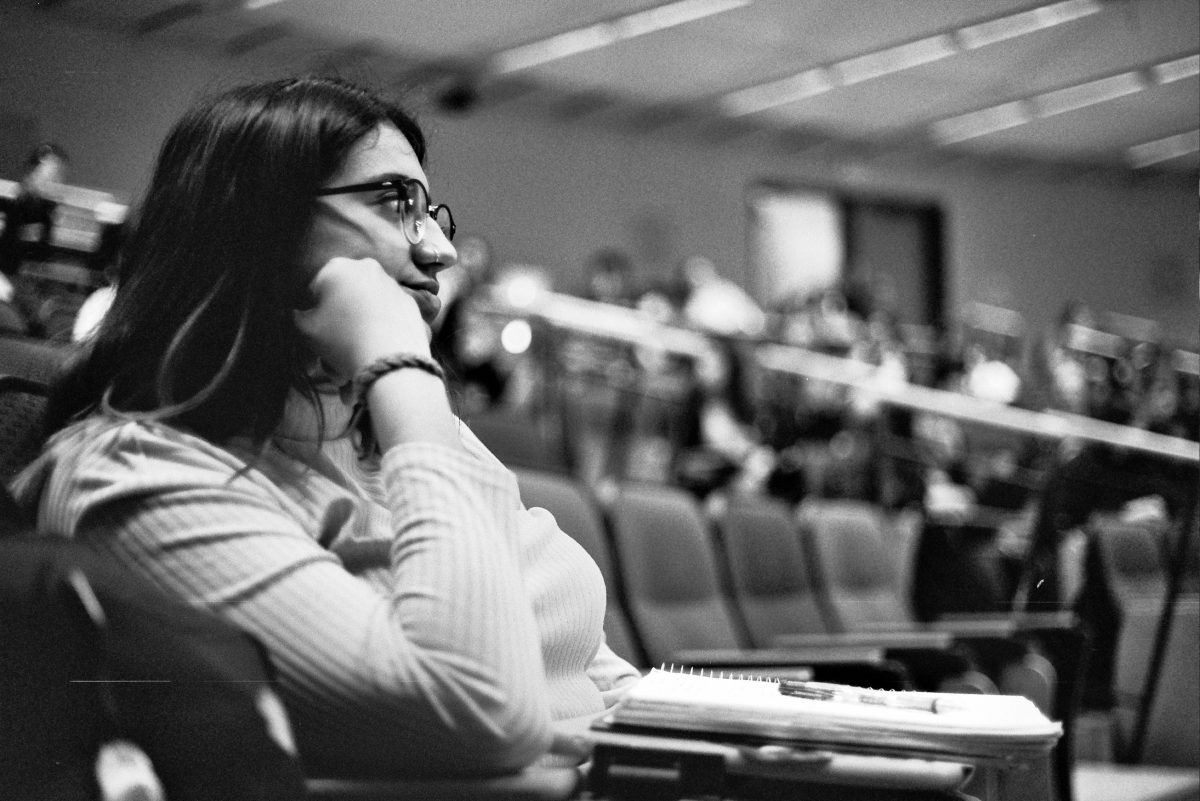The one thing that hospice caregiver Beth Stephensen’s job has taught her is optimism. A small, middle-aged woman with glasses, Stephensen sips her tea before saying with a laugh, “Every day you can wake up and open your eyes, put your feet on the floor and walk, it’s a good day. I have a tendency to be less of a self-pitying whiner.”
Stephensen has been working with terminally ill patients for 25 years and working in hospice care for the past 13 years. Her role as a caregiver ranges from controlling the pain and anxiety levels of the patient to emotionally supporting the families to training them in end-of-life care and post-mortem care. Although she found that many people believe hospice is a death sentence, she says the purpose is to control the patient’s pain. “We’re not there to hasten anything,” she says. “We’re just there to help.” While she admits that the work is not for everybody, she says she was drawn to work with end-of-life patients compared to?. “At work, we say you’re ‘called’ to it,” she says. Although all of her patients are dying, she finds comfort in caring for them.
Stephensen has cared for terminal patients of all ages, from children and teenagers to the middle-aged and elderly. Although she says no age is “easy” to care for, working with terminal children requires a “different box” to put those emotions in. Her first patient was an infant, and it was too emotionally distressing for her to be in the room with the parents. “I had to leave to cry, but then you’re not helpful,” she says. “It’s not about me. Now, I tell myself that there’s nothing we can do to change the outcome. I’ll do everything I can to make them comfortable, make that part of the journey as easy as possible.” Stephensen contrasts working with children to working with elderly patients: While they’re not necessarily easier to work with, because they have lived a full life and have done everything they can do, it “makes sense in the bigger picture of your heart.”
In order to separate her work life from her personal life, Stephensen removes her patients from her work schedule at the end of the week and won’t reload them until Monday morning. Although it took time to keep cases out of her mind during her off-hours, she says she has gotten better at controlling that over the years.
“You still feel grief and sadness,” she says. “And when you don’t anymore, you need to stop doing hospice.”
On a typical day, Stephensen will see five of her 15 patients. The caregivers are divided by zip code, and Stephensen has the -05 area of South and East Eugene. She used to be nervous about home care because of the vulnerability of being in the patient’s space, but now, she can’t imagine going back to working in the hospital because she’s not stuck in an office and has the freedom of flexibility and variety in her day.
First and foremost, Stephensen says as a hospice caregiver, you have to be respectful. The caregivers go to wherever the patient’s home is, even if it’s a shack or homeless center: where some of her patients have lived. “You see everything you can imagine and things you never imagined socio-economically,” she says. “Nothing prepared me for some conditions that people live in that aren’t on our radar. But you don’t focus on the surroundings or the home. You try and focus only on the human. Don’t let anyone feel ashamed by their circumstances.”
When Stephensen is in those types of situations, she tries to be the calm presence in a chaotic room. “When you’re in their house, you’re neutral, you’re Switzerland,” she says. “You leave your personal beliefs, religion, [and] politics in the car.” Despite her training, Stephensen says you learn the most in the field. When Stephensen first started working and a female patient died during her shift, she listened as the children had to tell their father with hearing problems repeatedly that “mom’s gone.”
“Everyone was sobbing, and I had silent tears,” she says. “And I thought, should I fill the silence? Is there something I should say? They kind of look to you for the next step and guidance. It took me a while to feel confident with that.”
Careful not to steal the spotlight from the family, Stephensen says a lot of times, she’ll cry in her car after she senses the cue it’s time to go. “I always feel whatever the family is [feeling],” she says. “It sounds like it’s depressing, but it’s really not.”
Stephensen has found, however, that most of her experiences with patients have been wonderful. She has been called “Angel” on countless occasions and has received more compliments than at any other job. “I feel lucky,” she says. “You learn so much more from other people’s families and the patient and their lives. I’m fortunate to go and help them. It renews my sense of humanity.”
Although the caregivers aren’t allowed to accept purchased gifts, they can accept tokens from the patients’ lives. Over the years, Stephensen has received both books and recipes as tokens. “I may just remember their first name, but,” she says, motioning towards her heart, “they’re in here.”









![[Photo Courtesy of the Lara Family]
Ruben embraces his beloved childhood goat, Katrina.](https://ethos.dailyemerald.com/wp-content/uploads/2025/05/katrina-1-1060x1200.jpg)








